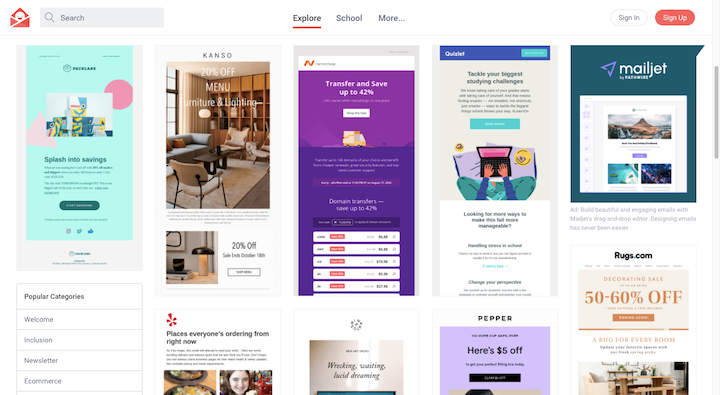How to Improve Your Website Design for Faster Loading Times
How to Improve Your Website Design for Faster Loading Times
Blog Article
The Value of Responsive Website Design in Today's Digital Landscape
In a period where electronic communications are increasingly carried out across a myriad of tools, the relevance of receptive website style can not be overstated. As mobile web traffic proceeds to surge, companies that focus on responsive style setting themselves to satisfy individual assumptions efficiently.
Enhanced Individual Experience
Enhancing individual experience is an essential objective of responsive site layout. A receptive site adapts perfectly to various screen dimensions and tools, making sure that users run into regular use despite whether they are accessing the site via a tablet, mobile phone, or desktop computer - Website Design. This flexibility is essential in today's electronic landscape where individuals anticipate prompt accessibility to info and solutions
Responsive style improves navigation by enhancing design and content presentation based upon the tool being used. This results in decreased scrolling, simplified food selections, and properly sized photos, which all add to an extra user-friendly surfing experience. Moreover, responsive web sites fill much faster on smart phones, lessening waiting times that can cause user stress and potential website desertion.
Incorporating responsive design not only improves fulfillment however also promotes user interaction and retention. They are much more most likely to advise the site and return to others when users discover internet content that is simple to access and navigate. Eventually, spending in responsive site design shows a commitment to conference customer needs, promoting a positive partnership in between the website and its target market, and enhancing overall brand name credibility.

Enhanced Search Engine Optimization Positions
Among the considerable advantages of receptive website design is its capacity to increase SEO rankings. Online search engine prioritize web sites that give an ideal user experience across various devices. A responsive design, which adjusts perfectly to different display dimensions, minimizes bounce prices and urges longer site sees-- 2 critical elements that affect internet search engine algorithms.
Google, specifically, has actually emphasized the relevance of mobile-friendliness in its ranking requirements. Websites that are not maximized for mobile gadgets may encounter penalties, resulting in reduced exposure in search engine result. By carrying out receptive design, businesses ensure that their web content is available and appealing, no matter the tool being made use of. This not only improves customer fulfillment yet additionally signifies to online search engine that the site is pertinent and credible.
Additionally, a solitary URL for both desktop computer and mobile variations streamlines the indexing procedure for search engines, as they can quickly creep and comprehend the website structure. This unified technique eliminates replicate content issues, further enhancing search engine optimization end results. Inevitably, buying a responsive site style is a strategic step that supports higher search engine rankings, driving natural web traffic and boosting overall online existence.
Increased Mobile Website Traffic
The rise in mobile traffic has ended up being a specifying characteristic of modern-day net use, basically improving exactly how companies approach their on-line existence. With a boosting variety of individuals accessing the internet with smart devices and tablet computers, firms have to prioritize receptive website design to make sure ideal customer experiences throughout varied gadgets.
As mobile website traffic remains to increase, services that fail to adapt danger pushing away a significant portion additional reading of their target market. Website Design. A responsive layout enables web sites to automatically adapt to different screen sizes and resolutions, supplying smooth navigating and accessibility. This versatility is crucial, as inadequate mobile experiences can lead to high bounce prices and shed conversions
Moreover, the significance of mobile web traffic is highlighted by search engines like Google, which prioritize mobile-friendly sites in their ranking formulas. This change highlights the need for organizations to not only improve their mobile interfaces however additionally to consider user actions and choices when creating digital web content.
Eventually, accepting receptive web site design not just provides to the expanding mobile target market however additionally strengthens brand name reputation and involvement, positioning companies for success in a significantly mobile-centric electronic landscape.
Affordable Upkeep
Preserving a receptive site style can substantially cut down on long-lasting prices for businesses. By carrying out a solitary design that adjusts to various devices, companies eliminate the demand for numerous website versions, reducing growth and upkeep expenses. This streamlined strategy not just saves sources but likewise streamlines updates and improvements.
With a receptive style, services can concentrate on enhancing one website rather than juggling several, making certain uniformity in branding and individual you can try here experience across all systems. In addition, responsive web sites tend to rate much better in internet search engine, possibly decreasing the prices connected with SEO efforts.
When it involves updates, an unified platform suggests that new features or material can be presented without the problem of adjusting numerous unique sites. This efficiency enables for quicker turnaround times, allowing companies to respond to market adjustments or consumer needs quickly.
Furthermore, as innovation develops and brand-new tools emerge, organizations with responsive styles will certainly encounter less challenges in adjusting their websites. This future-ready strategy decreases the chance of sustaining unforeseen costs related to redesigns or system movements. By focusing on receptive layout, business can accomplish long-term monetary sustainability while preserving an one-upmanship in the digital landscape.
Future-Proofing Your Site
Preparing for the future of website design is crucial for organizations intending to remain appropriate in an ever-evolving digital landscape. As technology advancements, customer assumptions shift, demanding websites that not only look enticing yet additionally work perfectly across various devices and systems. Future-proofing your web site includes carrying out adaptive design principles that accommodate emerging modern technologies, such as voice search and artificial intelligence.
To accomplish this, companies must prioritize adaptable formats, scalable graphics, and minimal loading times. Welcoming a mobile-first method ensures optimal performance throughout the enhancing number of mobile customers. Website Design. Moreover, integrating progressive web applications (PWAs) can boost individual experiences by giving quick, trusted gain access to no matter network problems.
On a regular basis updating content management systems and frameworks is important to maintain protection and functionality. In addition, utilizing responsive layout principles allows web sites to adjust easily to brand-new gadgets and screen dimensions. Organizations needs to also think about ease of access standards to guarantee inclusivity for all customers.
Final Thought
In final thought, responsive website design plays a crucial function in maximizing user experiences helpful hints in the modern digital landscape. Eventually, spending in receptive layout guarantees adaptability to future technical improvements, strengthening brand name integrity and cultivating enduring online visibility in an ever-evolving electronic setting.

Additionally, as innovation advances and new tools arise, companies with responsive styles will encounter fewer challenges in adjusting their internet sites.In verdict, responsive website style plays a critical function in optimizing user experiences in the contemporary electronic landscape.
Report this page